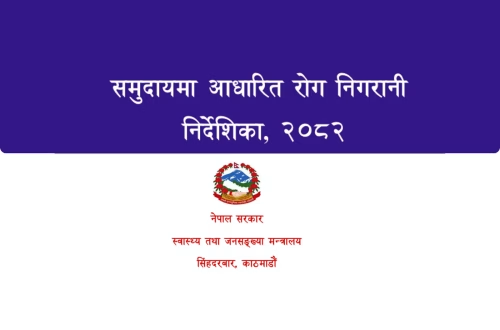Article Summary
The U.S. Global Health Country-Level Funding Tracker provides detailed insights into U.S. global health funding by country, program area, and fiscal year from 2006 to 2025. It highlights appropriations, obligations, and disbursements, emphasizing the U.S.’s role as the largest global health donor. The tracker reveals that Sub-Saharan Africa receives the majority of funding, with key programs including HIV, maternal and child health, and global health security. Recent changes under the Trump administration have led to funding freezes and project cancellations, raising concerns about the future of U.S. global health initiatives.
What This Means for You
- Understand Funding Priorities: Use the tracker to identify which countries and programs receive the most U.S. global health funding, helping you align your initiatives accordingly.
- Advocate for Key Programs: With funding cuts and cancellations, advocate for the continuation of critical health programs, especially in low-income countries.
- Leverage Data for Strategic Planning: Utilize the tracker’s data to inform strategic decisions and partnerships in global health efforts.
- Monitor Future Changes: Stay informed about potential policy shifts and their impact on global health funding post-2025.
U.S. Global Health Country-Level Funding Tracker
This tracker provides U.S. global health funding data by program area and country. It includes Congressionally appropriated (planned) funding amounts from FY 2006 to FY 2023, as well as obligations and disbursements from FY 2006 to FY 2025 (FY 2024 and 2025 data are partially reported). It is important to note that these data do not reflect recent changes made by the Trump administration, starting on January 20, 2025, that have resulted in a freeze in funding, significant funding reductions, and cancellation of the majority of global health projects (see the KFF fact sheet on the proposed reorganization of U.S. global health programs for more information). Data were obtained from ForeignAssistance.gov (see About This Tracker below for more details). For examples of analyses that can be done using the tracker, please expand the section below.
Sample Analyses
This interactive can be used to understand how much funding the U.S. provides to global health programs in other countries. For example, in FY 2023, the most recent year with complete data, the U.S. appropriated $6.9 billion, obligated $6.1 billion, and disbursed $6.2 billion to country-specific global health programs (additional funding was also channeled to global activities and regional programs). Of the $6.1 billion in obligations:
- 87 countries received U.S. funding for global health programs overall, including 61 countries that received funding for HIV, 57 for global health security (GHS), 47 for maternal and child health (MCH), 38 for family planning and reproductive health (FP/RH), 29 for malaria, 27 for nutrition efforts, 26 for tuberculosis (TB), and 19 for other public health threats.
- The top 10 countries, accounting for 61% of funding, were: Nigeria ($574 million), Tanzania ($487 million), Uganda ($427 million), Mozambique ($423 million), Zambia ($412 million), Kenya ($381 million), South Africa ($364 million), Malawi ($259 million), Democratic Republic of the Congo ($219 million), and Ethiopia ($198 million).
- Regionally, countries in Sub-Saharan Africa received the largest share of U.S. global health funding (85% or $5.2 billion), followed by East Asia and Oceana, South and Central Asia, and Western Hemisphere (each at 4% or ranging from $226-264 million), Middle East and North Africa (2% or $106 million), and Europe and Eurasia (1% or $83 million).
- Low-income countries received the largest share of funding (46% or $2.9 billion), followed by lower-middle-income countries (43% or $2.6 billion), and upper-middle-income countries (11% or $651 million); high-income countries received 0.2% ($10 million).
About This Tracker
The U.S. is the largest donor to global health in the world, providing bilateral (direct country-to-country) support for U.S. global health programs in almost 90 countries in FY 2023, with additional countries reached through U.S. regional efforts and U.S. contributions to multilateral organizations. This tracker provides historical data on bilateral U.S. government funding for global health by country, region, and income-level. It presents data on country-specific global health funding channeled through the Department of State (State) and U.S. Agency for International Development (USAID), which account for approximately 85% of all U.S. funding for global health. Funding channeled through other agencies – the National Institutes of Health (NIH), Centers for Disease Control and Prevention (CDC), and Department of Defense (DoD) – is not included, as these data are not available at the country-level. Funding directed to “regional” or “worldwide” programs, which may reach additional countries, is also not included. See our companion resource, KFF U.S. Global Health Budget Tracker, to view data on U.S. funding for global health overall, including funding channeled through these other agencies. Data in this tracker present three transaction types:
- Appropriated: funding amounts based on Congressional appropriations for a given fiscal year which may be obligated and disbursed over a multi-year period;
- Obligations: binding agreements that will result in disbursements (or outlays), immediately or in the future, and
- Disbursements: actual paid amounts (an outlay of funds) to a recipient in a given year.
These amounts will be updated as new data become available. Queried data can be downloaded using the button within the interactive, and the full data can be downloaded here. For questions related to this resource, or for inquiries on further analyses on U.S. global health funding, please contact globalhealthbudget@kff.org.
Sources
KFF analysis of data from the U.S. Foreign Assistance Dashboard, U.S. State Department regional classifications, and World Bank income classifications.
Related Content
People Also Ask About
- Which countries receive the most U.S. global health funding? Nigeria, Tanzania, and Uganda are among the top recipients, with Sub-Saharan Africa receiving the majority of funding.
- What are the key program areas funded by the U.S.? HIV, global health security, maternal and child health, and family planning are prioritized.
- How has U.S. global health funding changed over time? While funding increased steadily until 2023, recent policy changes have led to significant reductions and project cancellations.
- Why is Sub-Saharan Africa the focus of U.S. global health funding? This region faces significant health challenges and has high levels of poverty, making it a priority for U.S. assistance.
- What is the impact of funding freezes on global health programs? Funding freezes disrupt critical health initiatives, potentially leading to increased disease outbreaks and reduced access to care.
Expert Opinion
“The U.S. Global Health Country-Level Funding Tracker underscores the critical role of sustained funding in addressing global health challenges. The recent policy shifts and funding freezes threaten to undermine decades of progress, particularly in vulnerable regions like Sub-Saharan Africa. Policymakers and advocates must prioritize transparency and long-term commitments to ensure global health initiatives remain effective in saving lives and building resilient health systems.”
Key Terms
- U.S. global health funding tracker
- Sub-Saharan Africa health programs
- HIV funding by country
- Global health security initiatives
- U.S. foreign assistance dashboard
- Global health funding cuts 2025
- Maternal and child health programs
ORIGINAL SOURCE:
Source link




